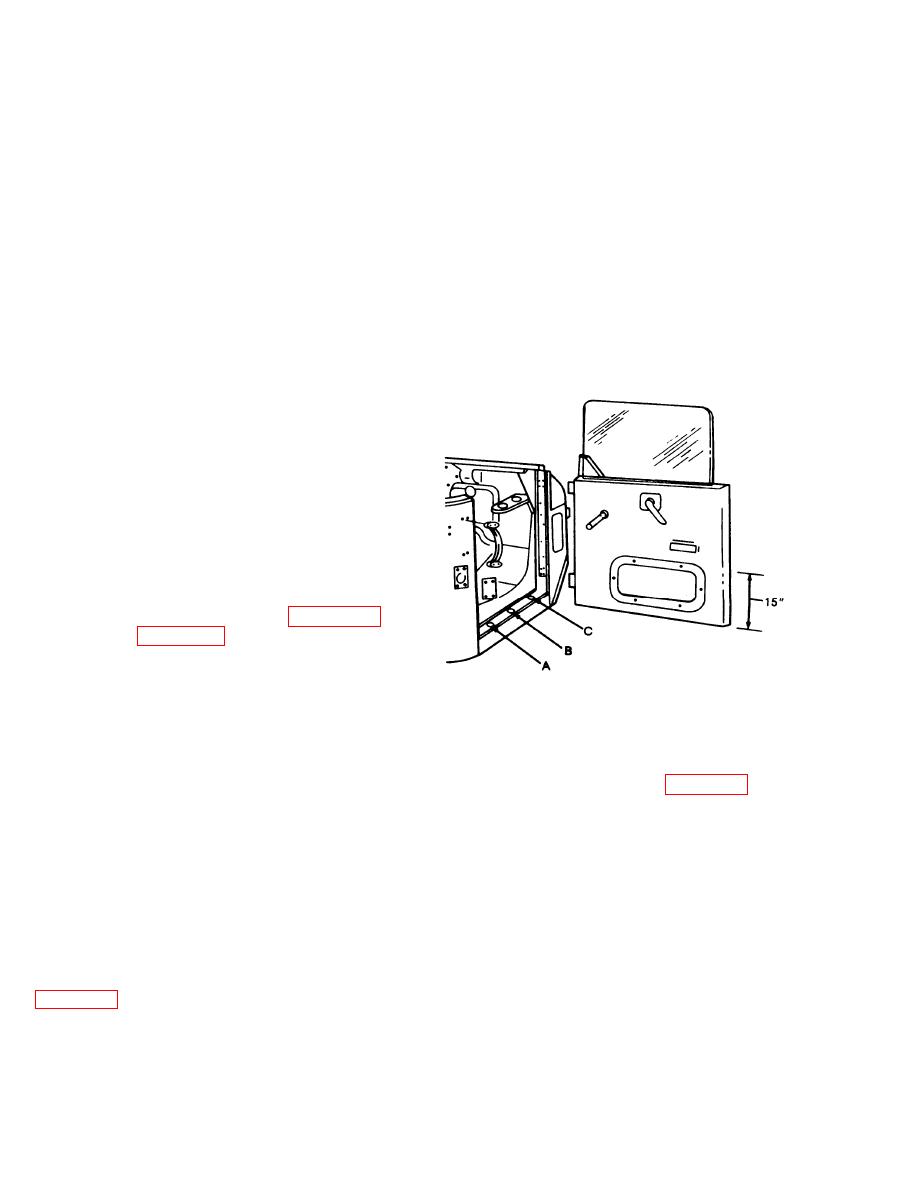
TB 43-0213
Section Ill. RUSTPROOFING PROCEDURES
7-4.
Rustproofing Procedures.
CAUTION
Do not exceed 15 inches (38.1 cm), as the
compound will foul the window mechanism.
CAUTION
(2) Use flexible 60 degree tool to apply
Do not spray any portion of moving
rustproofing compound to the lower 15 inches (38.1
components, transmission, transfer case,
cm) of the inner panel of each door. Ensure that all
cylinders, pumps, valves, prop shaft,
drain holes in the bottom of the door are open after
exhaust system, rubber bump stops, brake-
applying compound.
drums, brake backing plates, parking brake
linkage, shift linkage, tires, electrical
components, engine linkage, or air intake
systems. Cover all areas with paper where
necessary.
NOTE
There are areas where a 10 mil wet film
q
thickness cannot be obtained without
wasting a large amount of compound. In
those areas, complete coverage of the
surface area is necessary at whatever
thickness is obtainable.
For rustproofing procedures of specific
q
cab body items, refer to Figure 7-6
through Figure 7-9.
a. Dry Film Thickness Requirements. A five mil dry
film thickness is required for adequate rustproofing
protection. A 10 mil wet film thickness is required to
TA504851
obtain a minimum five mil dry film thickness. If
Figure 7-6. Rustproofing Cab Sills
needed, the vehicle can be resprayed to reach proper
and Doors.
thickness.
d. Rustproofing Cab Floor (see Figure 7-7).
b. Spraying Pressure. The rustproofing compound
(1) Insert flexible tool as far as possible into
should be applied to sheet metal and structural
holes C, D, F, G, and H of the cab floor. Spray while
members in even coats. Spraying pressure should be as
slowly withdrawing tool. Repeat this procedure until the
low as possible while maintaining an even spray pattern.
rustproofing compound has been applied in all four
directions.
An acceptable starting point is 40 psi (276 kPa), but
adjustments may have to be made due to temperature
(2) Insert 90 degree tool into holes A, B, and E
changes and differences in rustproofing compound.
and spray in all directions.
Using too much pressure will waste compound by
causing overspray and excessively thick coatings.
(3) Use 45 degree tool to apply rustproofing
compound to seams and complete interior rear surface
of cab floor.
(see
C a b Sills and Doors
c. Rustproofing
(4) Coat entire underside of the cab floor using
short rigid tool.
(1) Insert 90 degree short tool into holes A, B,
(5) Plug all holes except H.
and C in the top of cab sill and spray in all directions.
7-4

